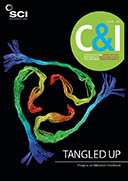The leaves of the plant Artemisia annua are the natural source of the potent antimalarial drug artemisinin. Now, scientists investigating the biosynthesis of artemisinin say the plant could also be a potential source of other novel pharmaceuticals.
Artemisinin, a sesquiterpene lactone, accumulates in glandular trichomes, or extracellular cavities, in hairs on the surface of the plant’s leaves. Significantly, 1% of the dried weight of the leaves is artemisinin.
The researchers, led by Ian Graham, professor of biochemical genetics at York, set out to investigate the in vivo function of cytochrome p450s, key enzymes in the biosynthesis of artemisinin. They looked at the enzyme CYP71AV1 responsible for catalysing the three step conversion of amorpha-4,11-diene (A-4,11-D) to artemisinic acid (PNAS, doi: 10.1073/pnas.161156113). By using mutagenesis and screening technology, the team isolated and characterised a mutant plant with a disrupted CYP71AV1 gene and corresponding enzyme. However, instead of observing a build-up of the precursor molecule A-4,11-D in the mutant, as expected, they found the diene had converted to a new compound, which they called arteannuin X.
University of Reading chemist Geoff Brown confirmed arteannuin X to be a sesquiterpene epoxide by NMR. The epoxide was present at around half the concentration of artemisinin in the trichomes of the wild plant. According to the researchers, this demonstrates the potential of trichomes as factories for producing novel sesquiterpenes at commercially viable levels. Graham adds, ‘We reason that if we can have a factory that accumulates amorpha-4,11, diene using either naturally occurring enzymes in the factory or by introducing new enzymes, we should be able to develop a synthetic biology platform for making a whole range of molecules.’
The researchers also confirmed that the final stages of artemisinin production from artemisinic acid via dihydroartemisinic acid (DHAA) is light-dependent and non-enzymatic. This finding implies that the structure of the trichomes allows this process to happen. Graham explains, ‘Non-toxic DHAA is produced inside the cells of the trichomes and probably then pumped out to the extracellular cavity, where the non-enzymatic light dependent reaction occurs to produce the toxic artemisinin.’
John Mann emeritus professor of chemistry at Queen’s University Belfast, UK, comments: ‘ Inhibition of key enzymes thus allows access to novel intermediates which should provide opportunities for semi-synthesis of valuable bioactive natural products and new analogues in the future.’





